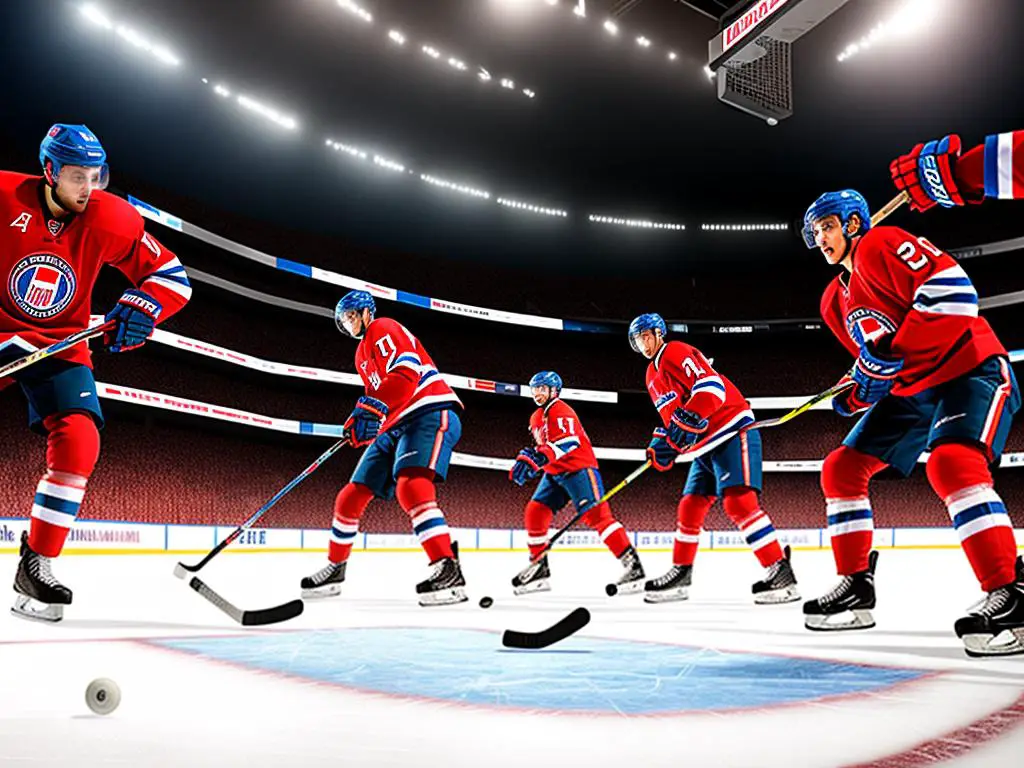Welcome to the exciting world of ice hockey, a fast-paced and thrilling sport that originated in Canada and has since gained immense popularity around the globe. Ice hockey is a game well-loved for its adrenaline-pumping action, deceptive strategies, and sheer unexpected happenstances. This introduction is geared towards giving you a basic understanding of the game, its rules, objectives, and the unique terminology associated with it. We’ll embark on a journey which begins with the sounds of the opening faceoff, glides through the rough and tumble of penalties, ventures into the strategic zones of the playing field, and finally, basks in the glory of a win or the lessons gleaned from a loss.
Game Rules and Objectives
Ice Hockey: The Basic Rules and Objectives
Ice hockey originated as a winter pastime, where two teams compete to score the most goals. A hockey game is started with a faceoff in which a referee drops the puck between two opposing players in the center of the ice rink. The team that wins the faceoff gains control of the puck.
Hockey equipment is very important for player safety and includes helmets, mouthguards, neck guards, shoulder pads, elbow pads, gloves, shin guards, and skates. Players are also required to have hockey sticks to move the puck and specialized goalie gear for the player who defends the goal.
Scoring in ice hockey is achieved when a team successfully maneuvers the puck across the opponents’ goal line into the net. The team with the most goals at the end of the game wins.
Division into Periods and Playoff Eligibility
An ice hockey game is typically divided into three 20-minute periods with a 15-17 minute rest period in between. The team with the most goals at the end of the three periods wins the game.
To qualify for the playoffs, a team must be among the top in their division or conference. Playoffs are a series of elimination rounds where the winning team moves forward.
How to Win a Game and Tie Scenarios
The main objective of an ice hockey is to score more goals than the opponent within the game’s regulation time. If at the end of the third period the score is tied, then the game goes into an overtime period.
During overtime, the teams play a sudden-death session, which means the first team to score wins the game. If no team scores during the overtime, the game is decided by a shootout.
Indeed, during a shootout, each team selects a few players to take turns trying to score a goal one-on-one against the opposing goalie. The team with the most goals after the shootout wins the game.
Let’s start by diving into the fascinating world of ice hockey, learning all about the rules and objectives. We will cover everything from faceoffs to thrilling overtime shootouts.
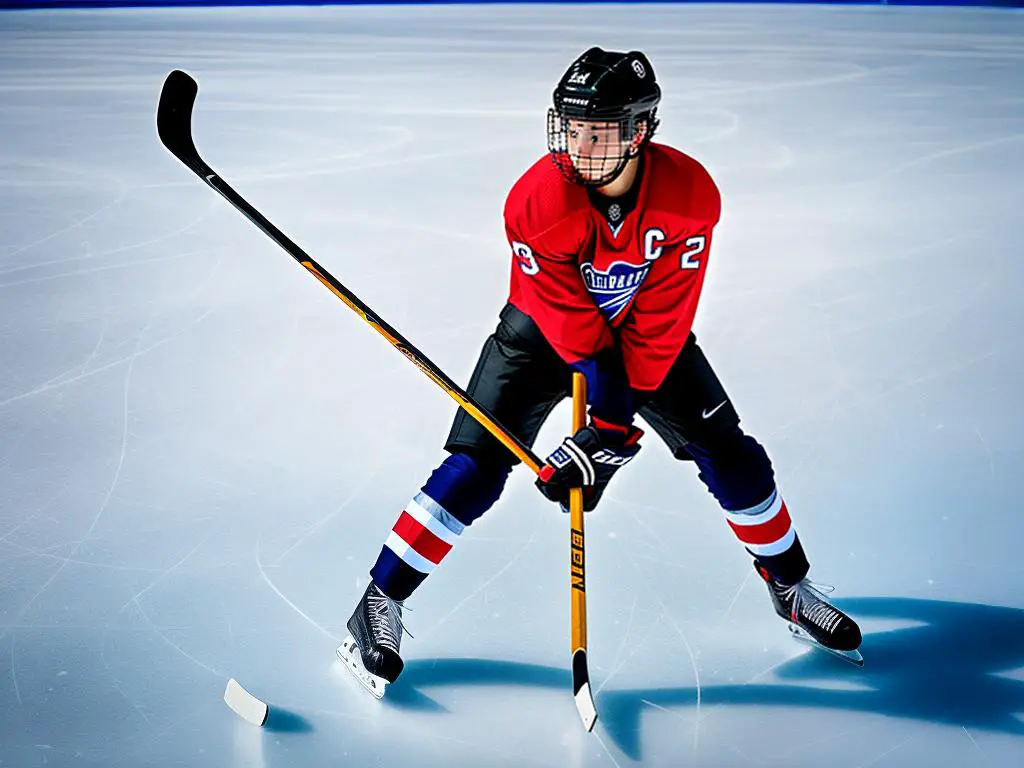
Playing Fields and Positions
Things We’ll Need:
Before we begin, make sure you have an ice hockey rink diagram to refer to. Don’t forget to bring your imagination too – it’s going to make our journey through ice hockey even more fun!
Step one:
Picture a hockey rink in your mind. The rink is divided into three segments lengthwise: the defensive zone, the neutral zone, and the offensive zone.
Step two:
The defensive zone is where the goalie’s net is located. This is the area a team will be protecting.
Step three:
The neutral zone is right in the middle of the rink between the two team’s nets. This is where many faceoffs take place.
Step four:
On the opposite end of the defensive zone is the offensive zone. This is where a team is trying to score goals.
Step one:
Notice several circles and spots marked on the ice. These are for faceoffs, which are how play is started at the beginning of periods and after goals.
Step two:
Locate the blue lines on the rink. These lines indicate the boundary between the defensive zone and the neutral zone, and between the neutral zone and the offensive zone.
Materials:
A basic understanding of the five positions in ice hockey: three forwards, two defensemen, and a goalie.
Step one:
The three forward positions are left wing, centre, and right wing. They play primarily in the offensive zone and their main job is to score goals.
Step two:
The two defensemen are left defense and right defense. They play mostly in the defensive zone and their main goal is to stop the opposing team from scoring.
Step three:
Last is the goalie. Positioning in front of the net in the defensive zone, the goalie’s main goal is to stop the hockey puck from entering the net.
On Ice Player Count:
In ice hockey, each team is allowed up to six players on the ice at the same time. But, if a player breaks a rule and gets a penalty, that number might become less!
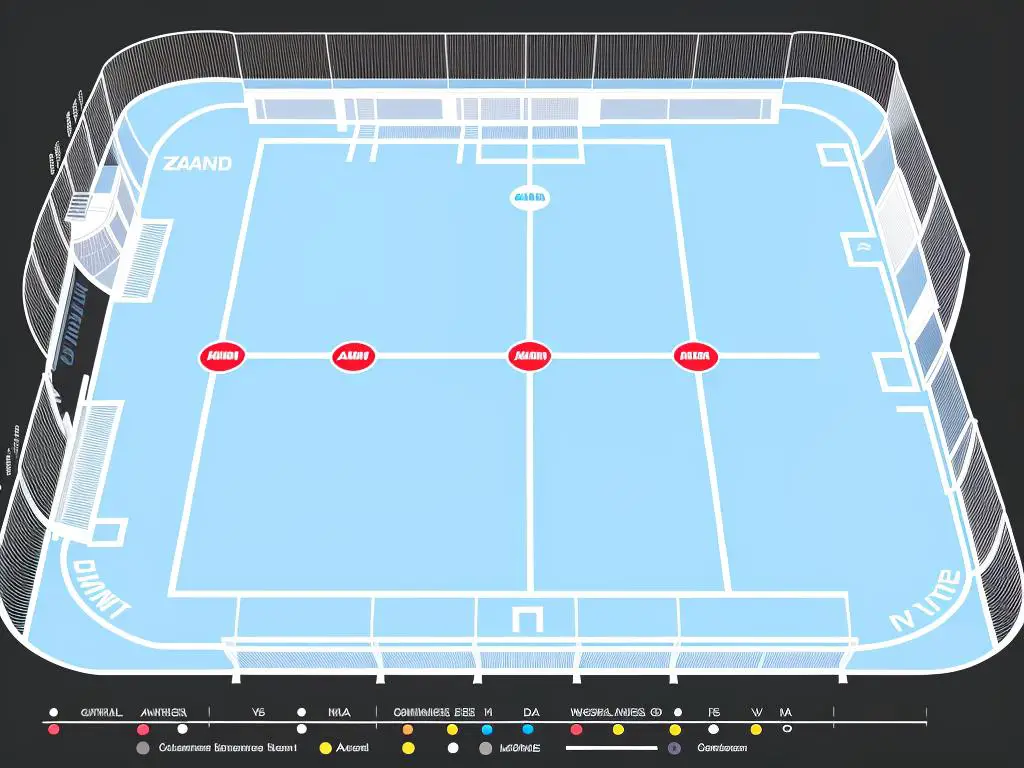
Penalties & Offences
Let’s Learn About Penalties and Offenses:
Ice hockey is a super fast and exciting sport! But sometimes, players might not follow the rules and get penalties. So, let’s find out more about this part of the game.
Common Hockey Offences
- Icing: Imagine a line called the red line across the middle of the ice. Icing is when a player shoots the puck from his side of this line, and it goes all the way to the other end, past the goal line, without another player touching it. But there are exceptions! If the team is short of players because of a penalty, or if the referee thinks the other team could have played the puck, there won’t be an icing call.
- Offsides: There’s another line called the blue line near each goal. A play is offsides if an attacking player crosses this line before the puck does. If the linesman spots this, he blows his whistle, and play stops.
- Delayed games: There are rules against things that delay the game on purpose. For instance, a goalie or player can get penalized for tossing the puck over the glass and out of play within their defensive zone.
Penalty Shots and Power Plays
- Penalty Shot: Sometimes, one player gets a big breakaway, a chance to race towards the other team’s goal with the puck while no other player is between him and the goalie. If another player fouls him to stop him from scoring, the referee can call a penalty shot. The player gets to take a free shot at the goal with just the goalie to beat.
- Power Play: If a player gets a penalty, he has to sit out for a while, leaving his team short-handed. The other team gets a power play, with more players on the ice. This is a great chance to score.
Minor, Major and Misconduct Penalties
- Minor Penalties: These are small fouls like tripping another player or handling the puck with your hands. The player has to sit out the game for two minutes, and his team plays short-handed.
- Major Penalties: These are more serious like fighting with another player. The player has to sit out for five minutes, and his team plays without him. He can’t return to the ice even if the other team scores during this time.
- Misconduct Penalties: These are for very bad behavior, like using mean language. The player has to sit out for ten minutes, but his team can replace him on the ice. If a player gets two misconduct penalties in a game, he has to leave and can’t come back.
Ice hockey is an exciting, speedy sport that is full of fun. All the thrills comes from the players who follow the rules and regard each other while playing.
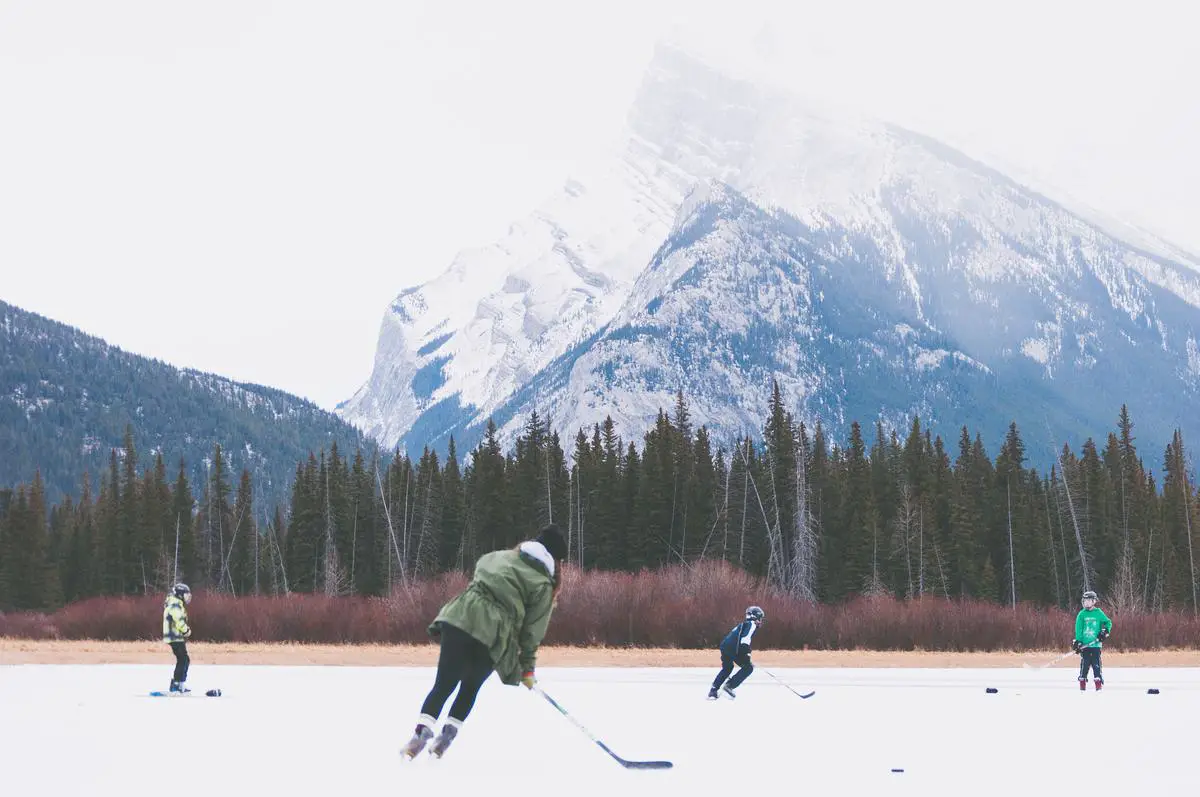
Photo by priscilladupreez on Unsplash
Understanding Key Hockey Terms
Making Sense of Some Basic Hockey Terms
“Face-off”: When we need to start or restart the game in ice hockey, we use a ‘face-off’. During this, you’ll see the referee drop the puck between two players (typically the centers) from the different teams. These players will try to take control of the puck. A face-off happens at the start of each period and after each pause in the game.
“Icing”: Now, ‘icing’ is a rule that stops teams from flinging the puck all the way down to the other side of the ice. If a player hurls the puck from their side of the red line (the line that slices the ice rink in two) all the way past the opposing goal line, and a rival team player touches it first, we call that icing. This leads to a face-off in the part of the ice that belongs to the team that did the icing. But remember, there’s no icing if the team has fewer players on the ice due to a penalty or if a player from the opposing team could have touched the puck before it crossed the goal line.
“Penalty”: If you break the rules, you get a ‘penalty’. Penalties mean punishments. The player who gets a penalty must sit in a special place called the penalty box and his team must carry on playing without him for a bit. Penalties happen if you trip another player with your stick, check a player from behind, or use your stick to hook a player.
“Penalty Shot”: If you are on a ‘breakaway’ – this means there are no defenders between you and your opponent’s goal – and a defender give you a penalty, then the referee might say ‘penalty shot’. This means you get a free attempt to score a goal with only the goalie to stop you. If you manage to score, you earn a point for your team. If not, the game carries on as normal.
“Overtime”: Sometimes games end up in a tie after three periods. Then we get an extra period named ‘overtime’. In pro hockey, the first team to score during overtime instantly wins the match. If no one scores in the overtime, then the game moves to a shootout.
“Playoffs”: At the end of the season, we have a series of games called ‘playoffs’ that help us to Crown the overall champion. The teams that did the best during the regular season make it to the playoffs. In these, teams compete in a series of games and the team that wins the most games moves on to the next level. This goes on until we have a final series that determines the ultimate champion.
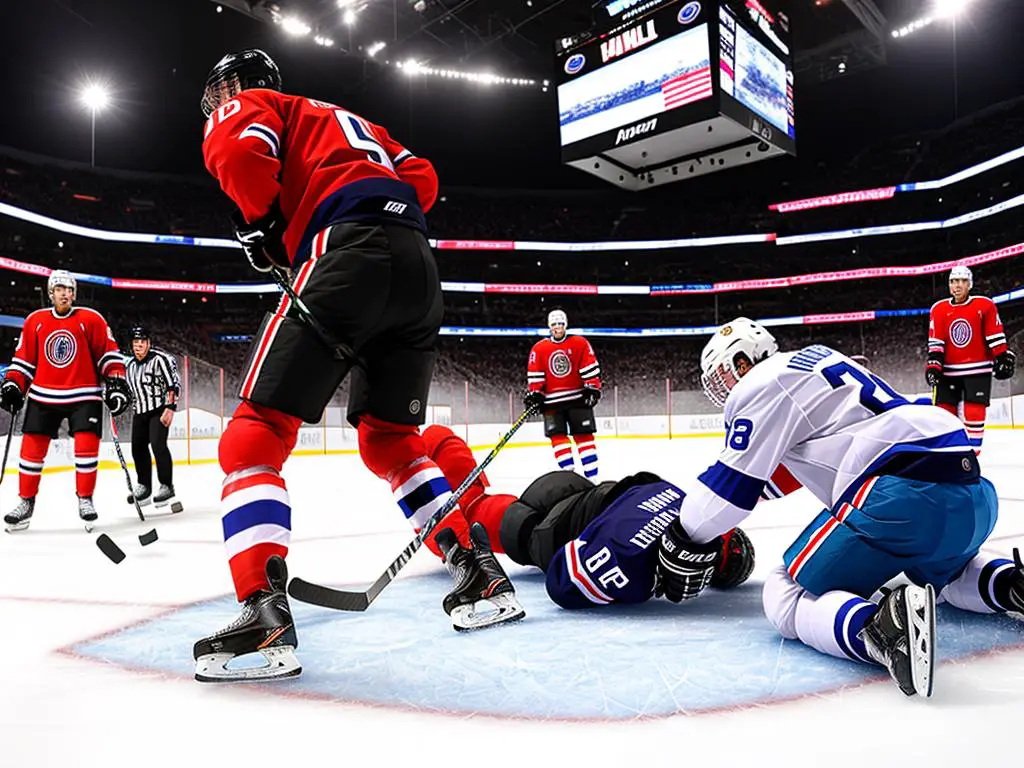
Today, we have taken a brisk skate around the fundamental components of ice hockey. Now, you are introduced to the exhilarating game, understanding how it’s played, and appreciating the subsequent intricacies and rules associated. We delved into strategic positions on the rink, explored the consequences of penalties, and increased our vocabularies with hockey-specific terminology. Equipped with this basic understanding, you’re now ready to either participate more fully as a fan or take your first step onto the ice. After all, whether you’re in it for the love of the game or the spirit of competition, one thing remains the same – hockey, in every form, is undeniably fun, electrifying, and truly a test of skill and fortitude.
